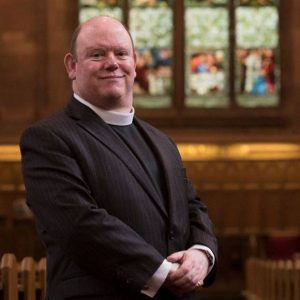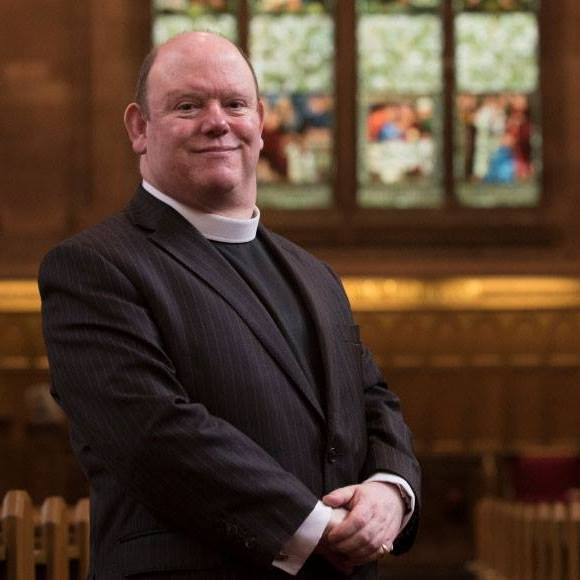
The following sermon was preached by the Rt Rev Dr Derek Browning, Moderator of the General Assembly of the Church of Scotland at St. Giles Cathedral in Edinburgh on Sunday, May 21, 2017. The text the sermon was based upon is Genesis 9:1-17; Acts 17:22-31. Rev. Dr. Browning uses this text to present a sermon on the theme of hope, not just for those assembled but for the world. Special thanks to Jane Bristow, Communications Assistant of the Media Centre of the Church of Scotland, for providing the text of the sermon.
Word of Life – Hope
Genesis 9:1-17; Acts 17:22-31
“Hope” is the thing with feathers –
That perches in the soul –
And sings the tune without the words –
And never stops – at all –
And sweetest – in the Gale – is heard –
And sore must be the storm –
That could abash the little Bird
That kept so many warm.
I’ve heard it in the chillest land –
And on the strangest Sea –
Yet – never – in Extremity,
It asked a crumb – of me.[i]
Emily Dickinson’s poem captures something of the fragility and persistence of that quintessential Word of Life: hope. In the gale, in the storm, in the chilliest land and on the strangest sea, hope, like a tiny bird perches in the distraught soul, singing the wordless song of hope, singing without ceasing.
That is surely what hope is. Fragile, but never, ever giving up. Fragile but resilient. Hope tells us that God does not give up; God does not let go. God finds different ways in different times to stir God’s people and make them question and wonder and think and disagree and act.
By the eve of All Saints, 1517, Martin Luther was ready to act. His unease with many of the practices of the medieval Roman Catholic Church had grown over years. Frederick the Wise of Saxony, a man of simple and sincere piety, had devoted his lifetime to making Wittenberg the Rome of Germany, a depository of sacred relics. He had a tooth of St Jerome, four pieces of St Augustine, four hairs of the Virgin Mary and three pieces of her cloak. He had a piece of Christ’s swaddling clothes, one wisp of straw from the manger, one of the nails from the crucifixion, a piece of the bread from the Last Supper and, with a prophetic nod to the Church of Scotland emblem, a twig of Moses’ burning bush. “Those who viewed these relics on the designated day and made the stipulated contributions might receive from the pope indulgences for the reduction of purgatory, either for themselves or for others….These were the treasures made available on the day of All Saints.”[ii]
We have our relics too. Somewhere in 121 George Street there is an umbrella reputed to belong to Thomas Chalmers. Students at St Andrews University at graduation are capped by the Chancellor with a piece of cloth said to have been taken from the breeches of John Knox. Edinburgh has something similar. Knox was a man with an extensive wardrobe apparently.
Luther acted, and reacted, and the Christian world has been reacting and reacting ever since that event when Luther reportedly posted his Ninety Five Theses to the door of the Castle Church of Wittenberg. I’d wondered about re-enacting the scene this morning, but nailing Ninety Five copies of the Blue Book to the glass doors of St Giles seemed a little too daunting.
The creation story of the flood ends not in destruction but in hope, and the rainbow is a sign of God’s hope. The Noah story is about despair and hope. It is a parable of condemnation and redemption; of rejection and welcome. God’s judgement is overridden, the floods abate, and a hopeful creation emerges out of the chaos and judgement. Hope comes.”[iii]
Humanity is often without hope. Hope depends entirely on a move from God. God resolves to stay with, endure and sustain our world, notwithstanding our brokenness. God takes as God’s ultimate vocation not judgement but affirmation.
God makes an irreversible commitment and says, “Never again”. On this basis the rainbow sign is established. The bow is a promise. If the bow is remotely a weapon, it is an undrawn bow. God will never again be provoked to use the weapon of total destruction against humanity. The arc of the bow is rooted in the earth but reaches up to heaven, connecting us in a bridge of mercy, and grace, and hope. The God Who is revealed here remains willing to accept hurt to keep hope alive. Hope will never be cut off because of us; hope continues despite us.
Just along the River Forth a new bridge is being built. Faith and love, through hope, are in the business of connecting worlds. We are in the business of building bridges of hope, not walls of exclusion and judgement and separation. If our churches need walls and roofs and foundations, let them also have doors and windows that can be opened. Let them have tables where people can be welcomed and fed, and stories of sadness and joy, fear and hope be shared.
Hope for the poor, hope for the rich, hope for the squeezed middle, hope for the Syrian and Palestinian, hope for the Jew and the Muslim, hope for the Unionist and Nationalist. Hope for the young man contemplating suicide because he cannot accept himself for who he is. Hope for the mother whose perinatal depression has robbed her of the joy of her new-born child.
What does the body of Christ look like in the light of the rainbow? What would it mean for our Church, every Church, to put God’s rainbow at the hopeful heart of all that we say and think and do?
I was in the Assembly Hall a few months ago recording the voice-over for the 360 degree photography project for Mission and Discipleship. I noticed in the Lord High Commissioner’s Gallery the stained glass window behind the throne. It has three parts: on its left an image of the nativity scene; on its right an image of the body of Jesus being loaded into the tomb by Joseph of Aramathea and Nicodemus. In the middle is Christ in majesty, with the Judgement Book open upon His knees; but He is seated on a rainbow. There is a rainbow of hope in the heart of the General Assembly Hall.
We could do with a few more rainbows in the Church. Jesus might want you for a sunbeam but I suspect He is rather partial to rainbows too. The rainbow is a symbol of hope; a symbol of our remembering God. It is a central message of God’s love and hope to us and to all God’s children. It is a challenge to those who make decisions in General Assembly, and Westminster, and Holyrood, and White House and Kremlin. It is a challenge in Damascus and Jerusalem. It is a challenge in Brexit and Indy2. We need to debate our future, but we must create it in hope.
In the days ahead in our General Assembly, and beyond them in the General Election, hope will remain an inconvenient challenge. Each one of us has our agenda; each one of us has our world-view, and our blind-spot. If God’s rainbow of hope is set within our hearts and homes, our Hall and Church, our community and country, it will be a profound challenge. We may be broken up or we may be broken down because of our prejudice and ignorance and partisanship and unwillingness to collaborate, and our swiftness to judge.
The Church needs to become a porous community within our nation. Through our sometime brokenness, from our porous Church, with its open windows and doors, the light and the rainbow of hope will arc out into the world. Our hope is to become an example of what is possible when people agree that wealth and poverty, age and gender, race and sexuality, strength of faith and strength of doubt are not barriers but bridges; not storm clouds of judgement but rainbows of hope.
Hope is not the fluffy option; a wistful, hand-wringing exercise for the incurably unrealistic. There is a cancer alive in our world today. It can be heard in the voices of those who feel they have been ignored. It can be seen in the faces of those who no longer find a place at the table, in public life and in church life. It can be seen in some aspects of populism that see a vote as a protest without considering the consequences. It can be seen in the rise of extremism which is filling the spiritual and ethical places of life where some educational and political philosophies have spent so much time defining what they are not and what they are against, and failing to make clear what they are, and what they are for. It is heard in fake news and alternative facts; aren’t they what we used to call lies and deceit? All these, and more, are there to be seen and heard in our often bleak world. We should be coming in – with our message, God’s Word of Life that is Hope.
The world is in transition, it always is. We are not watching its collapse but its recreation. The Church is in transition, it always is. An American colleague has said the Church is not dying; it is reforming. John Cleese said in the film Clockwise: ‘It’s not despair I mind; it is hope I can’t stand.’ Hope challenges our fatalism, which is why it is so unsettling.[iv]
Paul, preaching in the Areopagus in Athens, seeing the altar to the unknown god, tells the crowd of the God He knows, revealed in Jesus, making all people one nation, who also seek after God, “in the hope that they might feel after Him and find Him. Yet He is not far from each one of us.”
Hope, a Word of Life. As Jonathan Sacks, former Chief Rabbi wrote, “All I know is that the greatest achievement in life is to have been, for one person, even for a moment, an agent of hope.”[v]
In the Name of the Father and of the Son and of the Holy Spirit.
Amen
[i] Emily Dickinson, The Complete Poems, p116
[ii] Roland Bainton, Here I stand: Martin Luther p71
[iii] Walter Brueggemann, Genesis, p80
[iv] ibid p23
[v] Jonathan Sacks, To Heal a Fractured World, p270

